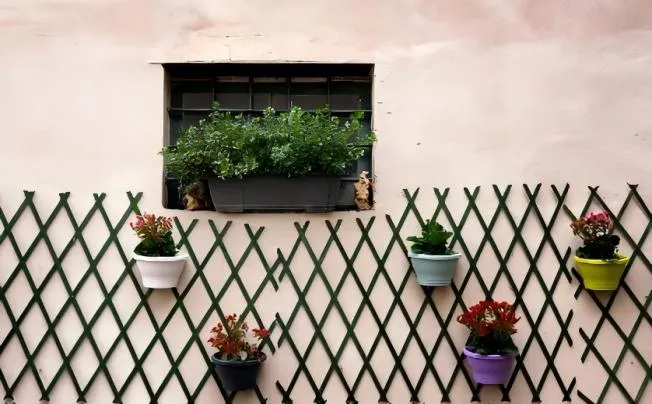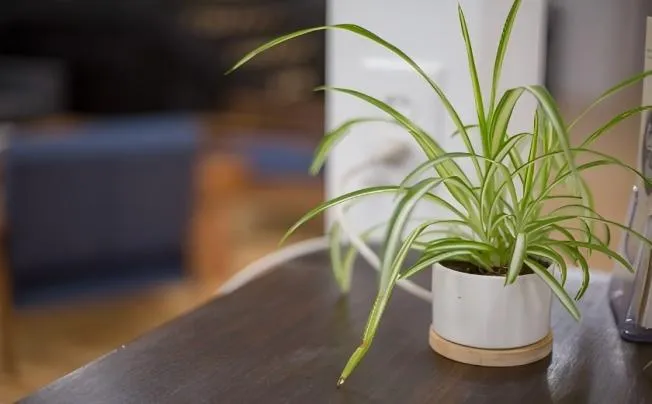What Are The Healthiest Pots To Use?
Many people choose their favourite varieties of plants with great care when they first start the lovely journey of plant care, but they frequently forget about one important component: the flower pot.
Inventory of common flower pot materials
1. Plastic flower pots
One of the most popular types available are plastic flower pots, which are inexpensive and a cost-effective option for inexperienced flower growers with tight budgets. They are also lightweight and portable, making it simple to move flowers from indoors to the balcony or to rearrange their placement in accordance with seasonal changes. At the same time, plastic flower pots come in a variety of colours and can satisfy the aesthetic preferences of various individuals.
Plastic flower pots do, however, offer a few clear drawbacks. Its poor water and air permeability makes it difficult for the air to circulate and the water in the soil to evaporate. This can easily result in water buildup in the soil and a lack of oxygen in the roots, which can ultimately lead to root rot and other issues. Therefore, flowers that need high soil permeability and drainage, like succulents and cactus, cannot be grown in plastic flower pots. However, plastic flower pots are an excellent option for certain moisture-resistant flowers, such Monstera and Calla Lily. Plastic flower pots are also frequently utilised at the flower seedling stage due to their portability and ease of use.
2. Flower containers made of ceramic
Because of their rich colours and beautiful look, ceramic flower pots are preferred. It has a firm texture, is long-lasting, and is fired at a high temperature. The surface's painted patterns can effectively highlight the potted plants' attractiveness and give the house a refined feel. You may discover a ceramic flower pot that complements any type of home decor, including Chinese, European, and modern minimalist styles.
However, ceramic flower containers have poor air permeability and drainage. Similar to plastic flower pots, they can easily lead to water buildup in the soil, so when growing flowers, you must be very mindful of how often and how much you water. Furthermore, ceramic flower pots are somewhat delicate, so you should exercise caution when moving them and using them to prevent collisions. Ceramic flower pots have limited air permeability, therefore you should carefully consider using them for flowers that are terrified of damp, such orchids and Clivia. However, ceramic flower pots are still a lovely and useful option for the majority of common flowers.
3. Flower containers made of cement
Flower pots made of cement are incredibly resilient, long-lasting, and difficult to break. Second, flower pots made of cement have an antifreeze effect. They can give plants a comparatively warm growing environment throughout the chilly winter months, which is ideal for northern flower enthusiasts. Furthermore, making cement flower pots is not too difficult.
However, for those who must move the flower pots regularly, the weight and difficulty of carrying cement flower pots make them inconvenient. Additionally, cement flower pots have poor drainage and air permeability, which can easily cause soil compaction and hinder plant root growth. Cement flower pots are also alkaline. Plants that are sensitive to alkalinity, such gardenias, camellias, and jasmine, may not grow normally if they are planted with them. Consequently, while using cement flower pots, it is important to choose based on the traits of the plants or implement certain improvement methods, like adding more ceramsite padding and tiles to the bottom of the pot to promote air permeability and drainage.

4. Ceramic flower vases with glaze
One type of flower pot with a distinct charm is the glazed ceramic flower pot. Good drainage and air permeability are its advantages. In addition to ensuring the flower pot's aesthetic appeal, the single-sided glazing design gives it good water and air permeability, which can create an ideal growing environment for plants by enabling their roots to flourish and breathe freely.
Glazed ceramic flower pots, however, require particular caution when being used and transported due to their relative fragility. Furthermore, some flower gardeners with tight budgets may experience financial strain due to the comparatively high unit cost of glazed ceramic flower pots.
There are many flowers that can be grown in glazed ceramic flower pots, including succulents, different grass flowers, etc., which can display a more charming posture against the background of glazed ceramic flower pots. As a result, glazed ceramic flower pots are more appropriate for people who have some experience with flower cultivation, have high standards for ornamental value, and are prepared to spend money on high-quality flower pots.
5. Flower containers made of glass
Glass flower pots' great transparency makes it possible for people to see the development of plant roots clearly, which makes flower cultivation a little more enjoyable. Glass flower pots are also long-lasting, corrosion-resistant, and non-deformable.
However, the usage of glass flower pots is limited because they are not breathable and are only suitable for hydroponic flowers. Glass flower pots are also brittle. When using them, take care to prevent collisions and attempt to keep them out of children's reach to prevent them from slipping, breaking, or becoming scratched by glass shards. Growing plants like spider plants, white peace lily and green radish in hydroponic glass pots can improve the microenvironment and raise air humidity in some comparatively dry spaces while also giving the house a smartly beautiful look. Nonetheless, during the maintenance process, care should be taken to regulate the water and light, avoiding direct sunlight, which raises the water's temperature too much and hinders plant growth, and to ensure that the water is kept clean by routine water changes.
How to choose a suitable flower pot?
Select based on the traits of the plant
Due to their preference for a "dry" environment, drought-resistant plants like cacti and succulents have very high standards for flower pot drainage and air permeability. They are best suited for red stoneware and clay pots with high air permeability. They can keep the roots dry, stop root rot, and swiftly evaporate the water in the soil. Certain plants that prefer dampness, including Monstera and Calla Lily, do better in ceramic or plastic pots. They can better maintain the moisture of the soil and meet the plant's demand for water.
The size of flower pots should also be chosen with consideration for the size of the plant's roots and growth patterns. Larger flower pots are necessary for plants with fast growth and well-developed root systems since they provide for more room for the roots to spread out. Certain slow-growing, shallow-rooted plants are better suited for smaller flower pots, which not only prevent too much soil and hinder water evaporation but also save room and give the plants a more delicate appearance.

Think about the use case
We focus more on the flower pots' aesthetic appeal and how well they blend in with the interior design when we cultivate flowers indoors. Some flower pots with slightly poor air permeability but beautiful appearance can be chosen because the indoor environment is relatively stable, with minimal changes in temperature and humidity, and because flower pot drainage and air permeability requirements are minimal.
Flower pots must endure more testing while growing flowers outside. Flower pots must have strong durability and adaptability to withstand extremes in temperature, wind, rain, and sun exposure. Because they are durable and difficult to break, flower pots made of materials like cement and plastic are better suited for outdoor use. Additionally, the outside flower growing area is spacious, and to produce a more striking landscape impression, various flower pots with unusual shapes and enormous volumes can be used. It should be mentioned, nonetheless, that in colder climates, where winter temperatures are low, flower pots with specific antifreeze qualities, such cement pots, or warming techniques are required to keep the pots from freezing and breaking.
Take note of the flower containers' specifics
Not to be overlooked are the flower pots' intricate patterns, which frequently have a significant impact on plant development in addition to their material, dimensions, and intended uses. The soil's ability to drain is directly impacted by the bottom drainage hole's design. Too few or too small drainage holes will easily lead to water buildup, which will deprive plant roots of oxygen and cause them to rot; too many or too wide drainage holes will cause water to evaporate too rapidly, which is detrimental to plant growth.

Selected Blogs
-
What customization services are available for metalworking customization?
2024-12-12
-
What Is The Difference Between A Plant Container And A Raised Bed?
2024-04-23
-
Garden Screening & Fence Panels
2024-04-23
-
Gardening pot selection tips
2024-04-17
-
The function and collocation of horticultural fire pot
2024-04-17


